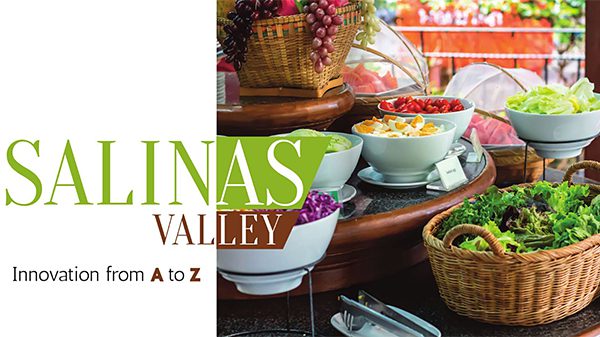While the variety of fruits and vegetables grown in Salinas Valley has not changed dramatically, there has been a noticeable expansion in what these fruits and vegetables go into, such as salad mixes and an array of packaged convenience items.

Most agree the national and global trend towards eating more fruits and vegetables for health and wellness is here to stay.
“Americans are eating healthier,” said Joe Kaslin, vice president of sales and marketing for Bengard Ranch, and in turn, “the vegetable category is increasing and volume is growing.”
This includes more salads and dishes blending in new flavors.
“With the growing prominence of ethnic cuisines, you’re seeing more herbs such as cilantro and parsley being used,” said Kaslin, who also agrees consumers continue to seek convenience.
But there is a potential downside: homogeneity. For Jeff Hyosaka, sales manager at Pacific international Marketing, innovation is in the bag.
“Washed, ready-to-eat salad blends are an important part of the retail mix. The question becomes, ‘How many duplicate blends with different labels can you display?’
“We like to develop partnerships with other innovators to ride the wave of new trends and open new markets. For example,” Hyosaka said, “there’s a trend toward smaller packages to accommodate smaller families and single people.”
Joe Feldman, general manager of River Fresh Farms, LLC points to the example of bagged romaine hearts. “These are something of a hybrid—trimmed and packaged for convenience, but not fully processed like the salad mixes. Salad mixes, celery sticks, and cut vegetables available today are a result of market forces.”
Francesca Marchini-Fordice of J. Marchini Farms in Le Grand, CA, believes there are plenty of ways to differentiate salad blends. “As a grower of specialty lettuces, especially for the Italian market, we’ve been producing radicchio since the 1980s. Since then, processors have been adding it to their salad blends,” she said.
“We’ve expanded into producing treviso, puntarella, and castelfranco,” said Marchini-Fordice, “which with radicchio are part of the chicory family. Demand has been increasing over the years along with kale and other ‘super food’ salad ingredients and unique flavors. Other specialties we grow are fennel and cardone, which we ship to produce markets all over the country.”
Hyosaka agrees, but points to the versatility of a newer kid on the block. “Kale and spinach were the hot items a few years ago, but now you’re seeing more demand for cauliflower and its other forms including cauliflower ‘rice’ and cauliflower pizza crust.”
Kaslin is a longtime producer of cauliflower. “Cauliflower has become prominent because in foodservice it’s being featured on new parts of the menu, such as appetizers.”
Feldman, too, has seen rising volume for cauliflower as well as Brussels sprouts, while Marchini-Fordice credits foodservice for its continuing creativity and culinary innovation. “That’s where many consumer trends start.”
This is an excerpt from the most recent Produce Blueprints quarterly journal. Click here to read the full version.


